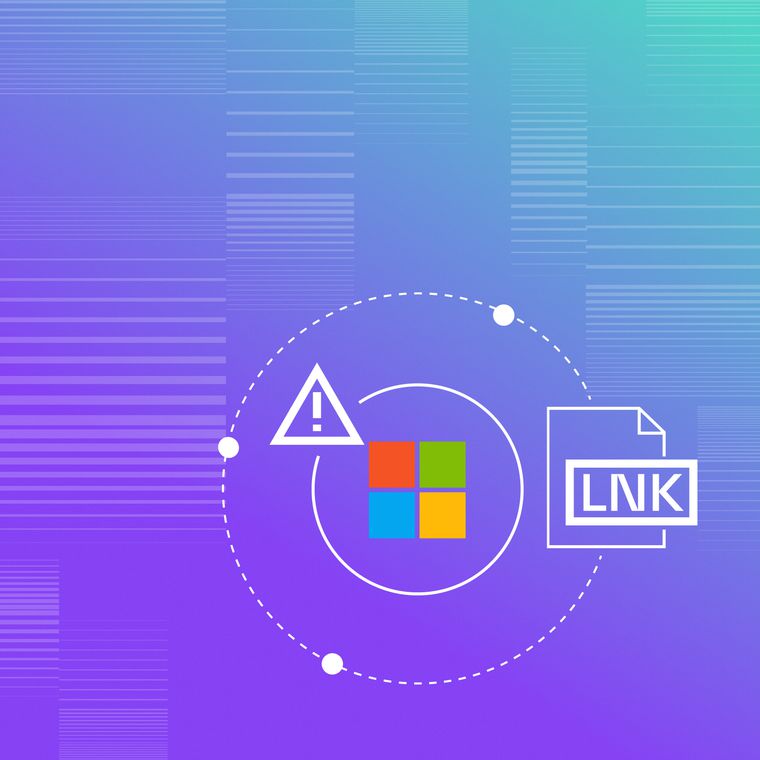How Serverless Functions Bypass Email Security and How to Fight Back
Understand how serverless functions bypass email security and what to do to protect your systems.
October 26, 2025
Threat actors launch a dramatic surge in serverless function phishing attacks, increasingly exploiting legitimate cloud platforms to bypass traditional email security defenses. Cloudflare Workers alone experienced a 104% increase in phishing attacks, jumping from 2,447 incidents in 2023 to 4,999 incidents in 2024.
Attackers leverage the same trusted cloud infrastructure your organization uses daily to create phishing sites that appear completely legitimate to both security tools and human targets. This represents a fundamental shift in how cybercriminals approach email-based attacks using serverless computing resources.
The Rise of Cloud-Native Phishing Campaigns
Serverless function phishing attacks exploit legitimate cloud computing platforms to host malicious operations that bypass traditional security controls. These sophisticated campaigns use major cloud providers like Cloudflare Workers, AWS Lambda, and similar serverless infrastructure to create transparent, man-in-the-middle phishing pages capable of bypassing multi-factor authentication while employing HTML smuggling techniques to evade detection.
Attackers establish command and control operations using serverless function endpoints in cloud regions, enabling them to issue commands and receive exfiltrated data from compromised machines, all camouflaged within legitimate cloud provider network traffic. Trust exploitation stands out as the primary driver. Think of situations when victims receive emails containing links to legitimate cloud provider domains with valid SSL certificates, both automated security tools and human targets trust the content far more readily.
These multi-stage attacks leverage programmatic HTTP manipulation, exploiting serverless functions' ability to transparently read or rewrite HTTP requests and responses. This enables real-time content manipulation that defeats static analysis tools designed to detect malicious content.
Why Your Email Security Cannot Stop These Attacks
Traditional email security solutions fail against serverless phishing attacks due to three critical detection gaps that attackers systematically exploit. These vulnerabilities include:
Link Reputation Filters Trust Legitimate Platforms
Reputation systems operate on the assumption that domain reputation correlates with content safety. Attackers exploit this by hosting malicious content on trusted cloud platforms that inherit high reputation scores. When security tools evaluate links pointing to established serverless infrastructure, they often classify them as safe, even when those platforms host sophisticated phishing operations. This reputation inheritance creates a significant blind spot in conventional security architectures.
CAPTCHA Protection Blocks Security Scanners
Modern phishing campaigns weaponize CAPTCHA systems specifically to evade automated security tools. Attackers leverage AI to craft sophisticated phishing campaigns using fake CAPTCHA pages. These pages present legitimate-appearing challenges to human users while blocking automated email security scanners from analyzing the malicious content behind these barriers. This technique effectively neutralizes automated threat detection systems that cannot solve visual challenges.
Serverless Proxies Hide True Malicious Infrastructure
Advanced attackers utilize serverless functions as temporary infrastructure that functions as command and control servers. Because serverless computing resources operate for very brief periods, they present unique challenges to traditional detection systems that rely on persistent infrastructure patterns.
AI-driven phishing emails now bypass traditional defenses within seconds, exploiting the gap between static rule-based detection and dynamic, cloud-native attack techniques. The ephemeral nature of serverless platforms makes traditional threat intelligence feeds ineffective.
The Anatomy of a Real Attack: From Financial Lure to Data Theft
Sophisticated serverless phishing campaigns follow documented attack patterns that combine financial urgency tactics with legitimate cloud infrastructure. These campaigns begin with messages claiming urgent invoice discrepancies or payment method changes, then direct victims through legitimate spreadsheet platforms like Google Sheets or Excel Online before routing them through serverless function proxies that act as transparent man-in-the-middle systems for credential harvesting.
The attack chain works because each step appears legitimate with trusted platforms, valid certificates, and familiar business processes that mask the social engineering underneath. Once credentials are captured, attackers can access corporate systems, exfiltrate sensitive data, and launch secondary attacks from compromised accounts. This multi-stage approach makes attribution difficult and response time critical.
Red Flags That Reveal Advanced Phishing Campaigns
Security teams can identify sophisticated phishing campaigns by monitoring for specific behavioral indicators and technical anomalies that reveal coordinated attacks leveraging serverless infrastructure.
These include the following pointers:
Never-Before-Seen Financial Urgency
Emails from unknown contacts creating artificial urgency around financial transactions or payment changes. These messages pressure recipients to act quickly without proper verification, exploiting time constraints to bypass normal security protocols and increase likelihood of action.
Suspicious Redirect Chains
Links routing through multiple legitimate platforms before reaching their final destination. Each redirect adds a layer of trust while obscuring the ultimate malicious endpoint from security tools and human scrutiny, often including recognizable services like URL shorteners or document sharing platforms hosted on serverless computing platforms.
URLs That Feel Legitimate
Addresses that appear trustworthy but lead through multiple proxy layers. Attackers deliberately choose domain names and URL structures that mimic legitimate business communications to lower recipient suspicion, with small variations in spelling or domain extensions that often go unnoticed.
Platform Inconsistencies
Content that passes technical filters but triggers human intuition about sender behavior or business process deviations. These subtle inconsistencies often represent the only detectable signals of compromise, so trust your instincts when something feels off about message timing, tone, or requests.
Building Better Defenses Against Sophisticated Attacks
Enterprise cybersecurity teams must implement comprehensive defense frameworks that combine AI-powered detection capabilities with serverless-specific security controls to address the fundamental limitations of traditional approaches.
Why Behavioral Analysis Beats Static Rules
AI-powered detection and behavioral analytics frameworks provide superior protection against novel threats compared to traditional signature-based approaches. Core applications of AI in cybersecurity include threat detection, phishing prevention, network security, and identity management. These are capabilities that adapt to new attack patterns rather than relying on historical signatures.
Machine learning models establish baselines for normal communication patterns within your organization. When attacks deviate from these established patterns, the system flags them for review or automatic remediation. This approach catches zero-day threats that have never been seen before, detecting anomalies in sender behavior, message content, and business processes that indicate serverless function abuse.
Creating Defense in Depth With AI Integration Strategies
Effective defense against serverless function attacks requires three interconnected layers that needs to be deployed across your organization:
Technical Controls: AI-enhanced email security with linguistic anomaly detection and automated threat response workflows. These systems analyze sender reputation, message content, and embedded links simultaneously to catch attacks that traditional filters miss, including those leveraging serverless infrastructure.
Process Controls: AI-specific incident response procedures and verification protocols ensure teams can quickly contain sophisticated attacks. Establish clear escalation paths and communication channels for suspected phishing incidents involving serverless platforms.
Administrative Controls: Enhanced security awareness training with AI-generated attack simulations. Regular testing prepares employees to recognize and report sophisticated phishing attempts while keeping security top of mind.
The Abnormal Advantage
Abnormal's behavioral AI platform works alongside existing email security infrastructure to detect sophisticated phishing campaigns through analysis of communication patterns. The platform ingests tens of thousands of signals unique to each customer, using behavioral analytics to precisely detect and remediate business email compromise, account takeovers, invoice fraud, and supply chain attacks in real time, including those exploiting serverless functions.
This approach focuses on understanding human communication patterns rather than relying solely on technical indicators that sophisticated attackers can easily manipulate. The behavioral AI analyzes communication context, sender behavior patterns, and business process deviations to identify attacks that maintain the appearance of normal business correspondence while exhibiting subtle anomalies indicating malicious intent.
Unlike legacy secure email gateways that rely on static rules, Abnormal continuously learns from your organization's unique communication patterns. This adaptive defense evolves alongside emerging threats, providing protection that improves over time rather than becoming obsolete, even as attackers adopt new serverless computing techniques.
Ready to strengthen your defenses against serverless phishing attacks that traditional email security can't detect? Schedule a personalized assessment to see how behavioral AI can work alongside your existing security infrastructure to identify sophisticated threats hiding behind legitimate cloud infrastructure.
Related Posts
Get the Latest Email Security Insights
Subscribe to our newsletter to receive updates on the latest attacks and new trends in the email threat landscape.


